Few movies grab you heart and soul as does The Red Shoes –Michael Powell and Emeric Pressburger’s masterpiece. Indeed it seems like a hallucinatory vision, come from a magic potion distilled out of a simple but tragic tale conjured by Hans Christian Andersen. That such a masterwork could come from a simple fairy tale is a testament to the art of motion pictures, and to the creative genius of Powell and Pressberger, known as The Archers, along with their incredible production team.
This post was written by Christian Esquevin and previously issued as part of the Powell & Pressburger Movie Blogathon hosted by the Classic Film and TV Cafe in March of 2012.
The Red Shoes was created in 1948, a blazing work of Technicolor in the black and white world of post World War II England. The film was written by Emeric Pressburger and directed by Michael Powell, but its artistic punch was the work of cinematographer Jack Cardiff, and especially that of art director Hein Heckroth. And as a film largely about ballet, it comes to life through the dancing of star Moira Shearer and of Leonide Massine. Director Michael Powell’s vision nonetheless permeates the film. He had grown up in the French Riviera town of Cap Ferrat, close to Monte Carlo where he had seen the work of the Ballets Russe. It was there that Powell had heard the story of how the great Vaslav Nijinsky and ballerina Romola de Pulszky married , only to be fired afterwards by Diaghilev.
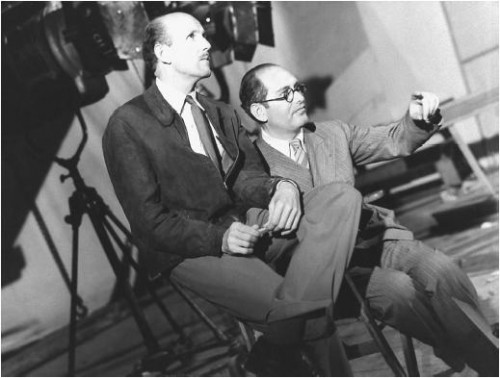
Thus emerged a screenplay about a single-minded ballet impresario who launches the career of a young composer, while also molding the career of a beautiful young ballerina. Anton Walbrook plays to perfection the powerful impresario Boris Lermontov, a puppet-master whose marionettes take on a life of their own. Marius Goring plays composer Julian Craster, with the young ballerina Victoria Page played by Moira Shearer. Both characters are trying to make it big in ballet and the orchestra, and to replace existing leads. Lermontov recognizes their talent and believes he can harness their ambition. To Lermontov, ballet is a religion. To aspiring ballerina Victoria Page, she must dance in order to live.

Miss Page will soon have her chance to become prima ballerina. Lermontov is angered when his star ballerina, played by Ludmilla Tcherina, becomes engaged to marry. His view is simple, “You can not have it both ways”, he says. “The dancer that relies on the comfort of human love will never be a great dancer.” Lermontov knows what he wants – it is ART, and everybody working for him must be single-minded in its pursuit – and the pursuit of his vision. Lermontov thinks he has a replacement for her, Victoria Page is as dedicated to the ballet as he is.

Art permeates The Red Shoes from its first title card to its last. While the film is not primarily concerned with filming backstage scenes and ballet production, it nonetheless captures the excitement at the peak of this activity at Covent Garden, as the dancers rehearse, the set dressers move props, musicians practice, sweepers clean, costumed characters parade on stage, and all appears chaotic. In an earlier scene, excited young aficionados rush in to get the best of the cheap seats.
Lermontov himself is always impeccably dressed, often in dark double-breasted suits with crisp white shirts and pale ties. The non-ballet costumes for Moira Shearer were designed by the noted Parisian couturier Jacques Fath along with Malli of London, while Miss Tcherina’s costumes were designed by another Parisian couturier, Carven. When they move the production to Monte Carlo, Miss Page wears a beautiful dress of horizontal stripes in pink, yellow and purple on white. She also wears an elegant full gown of blue over magenta, with a pleated blue silk opera coat.
It is refreshing to see the men dressed in a variety of elegant and casual clothes with great flair. No men’s costume credit is given, but Michael Powell must have provided the direction for the French Riviera style that was needed. At a meeting where they plan a new ballet, Lermontov wears cream-colored slacks with a turquoise-blue short-sleeved silk shirt over a dark blue t-shirt and red scarf. He wears sandals over socks, as was the European fashion. Massine wears cream-colored slacks, a dark blue blazer over a white shirt, with a red scarf and white shoes. When Miss Page enters she wears a loose jacket in light violet-magenta tones over a striped blouse.
A new ballet is being planned, the Red Shoes. Julian Craster will be the composer, and Victoria Page will be the prima ballerina. Red now appears as an accent color in many of the scenes.
Hein Heckroth designed the wonderful sets for the ballet, painting the backdrops himself. He spent six months painting some 120 scenes. Cinematographer Jack Cardiff sent for powerful new spotlights to be shipped to England from the U.S. These he used to light the dancers – brighter spots were needed amidst a general flood of lighting required for the Technicolor film. The incredible painted backdrops were not enough for the fantastical scenes filmed during the ballet – matte paintings were also used. For the Red Shoes Ballet, a magnificent red curtain rises over the scene of a shoemaker, danced by Massine, in front of a beautiful gold and brown set-painting of shelves full of shoes. He holds a special pair of red ballet slippers.
The ballet sequence itself becomes a parable of the ballerina’s life. Massine as the cobbler is a stand-in for Lermontov, enticing Miss Page to dance in the red shoes. Choreographer and dancer Robert Helpmann plays the Lover, representing Craster. She dances happily with the Lover, but still the shoemaker pursues her. At a carnival scene other men forcibly separate the Lover from her, and they dance with her in turns. Soon she out-dances them all, as they drop to the floor and are represented by sheets of colored cellophane falling through the air like leaves from a tree.
The ballet scene leaps dimensions – it is no longer filmed from the point of view of an audience watching a ballet – it becomes the existential reality of Miss Page herself, its sets reflecting her emotions and her predicament. Since Miss Page, as in the original tale, can not stop dancing as long long as she wears the red shoes, she dances her way through a series of magnificently designed but symbolically charged set designs reflecting her inner turmoil.
Miss Page dances through the night. In the early morning twilight, she dances with a floating newspaper, which metamorphoses into the Lover. Still the shoemaker pursues her, and soon demons do too.
She dances back onto the stage, with only Lermontov in his box watching, and Craster conducting. The audience has become a raging sea, and Lermontov and Craster are now huge rocks.
She dances and dances, unable to stop. She dances to a church in a town square, where memorial services are being held. She is not let in – her Lover has now now morphed into a priest. “Take off my shoes”, she gestures. She is offered a knife to cut them off, only it morphs into some flowers. She dies of exhaustion on the steps of the church, where the Lover finally takes off her shoes – and the shoemaker retrieves them for another use. An audience re-emerges to give Miss Page and the ballet wild applause.
And now the film-story mirrors the ballet story. Victoria Page and Craster become lovers, Lermontov fires Craster and she quits. Much later, Lermontov takes on the role of the shoemaker, enticing her to put the red shoes back on. He has gotten over his artistic jealousy for the sake of creating better art. Craster has not, and roils her planned return to the stage. But she has put on the red shoes, and her fate now becomes one with the tale.
As was the case with several great films, the production of The Red Shoes was steeped in problems and animosities. Moira Shearer did not get along with Michael Powell, suffering through injuries and, like the other dancers, discomforted from dancing on concrete studio floors. The initial art director walked off the production when he found out Powell had hired Heckroth to do the ballet sets. The 80 year-old German actor Albert Basserman, who played Ratov the costume and set designer, was publicly dressed down by Powell, and this offended Anton Walbrook who had venerated the veteran actor. And finally, Rank Studios who financed the film was unhappy with the final production, not to mention the significant cost over-run.
Regardless, the film is now considered a masterpiece. Its 17 minute long ballet sequence became a big influence on Vicente Minnelli and Gene Kelly in the production of An American in Paris. And it was Michael Powell and Emeric Pressburger that created this masterwork, mixing all the ingredients into the intoxicating stew that is The Red Shoes.
Views: 2026
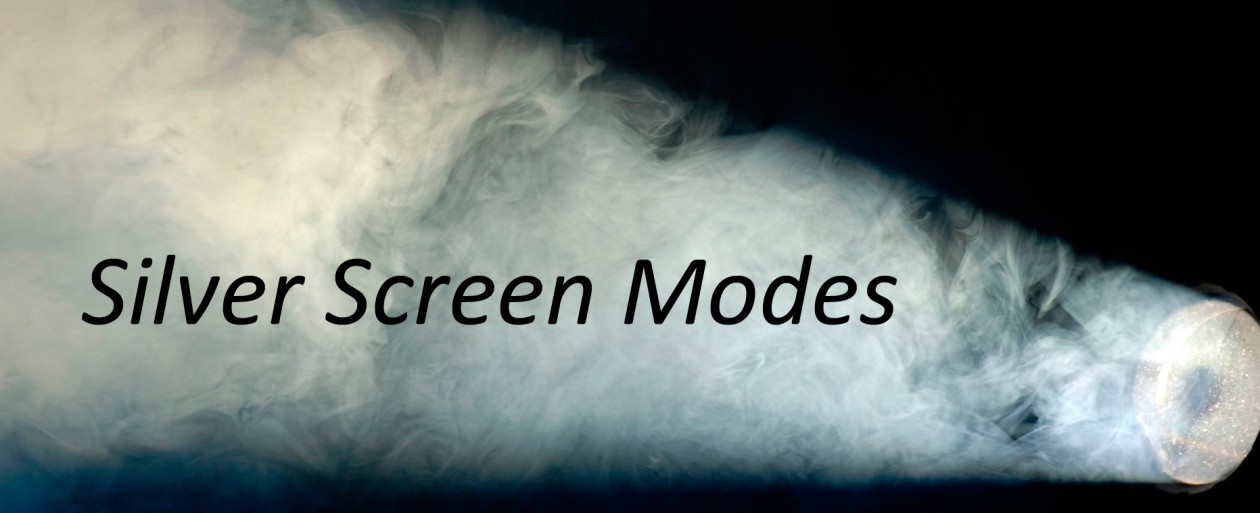
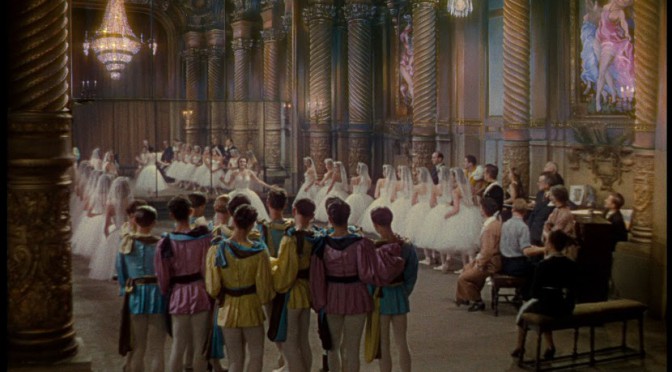

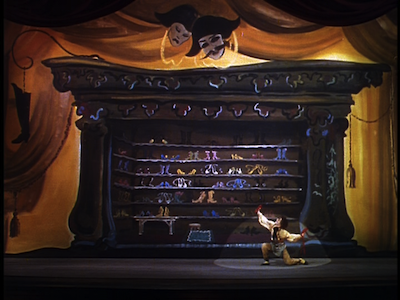

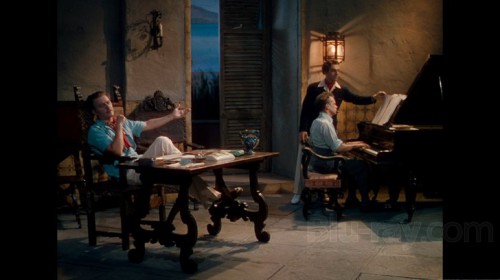


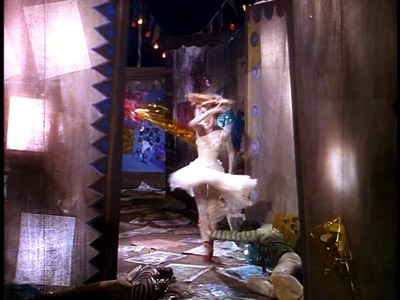

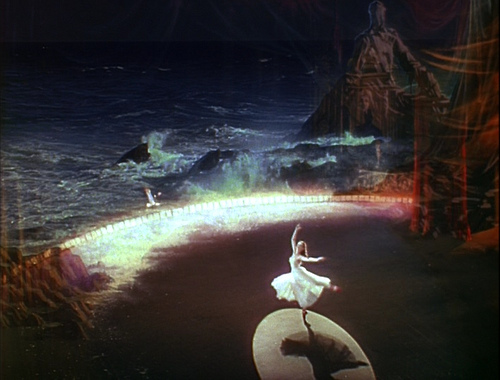
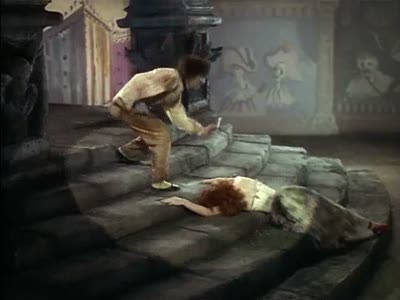

Love the commentary and photos here, which highlight some of what makes this film so magical! I wanted to let you know that I nominated you for the Sunshine Blogger Award. If you don’t have time for it right now, no worries–it’s still good to shout out what you do! Here’s where you find the rules: http://carygrantwonteatyou.com/fun-questions-on-classic-film/
Thank you very much Leah. I appreciate your nomination – but I am writing a book right now and haven’t even had the time to write a new blog post in quite a while. So
I’ll havee to decline. I appreciate your thinking of me.
What really interests me is how did they actually build the costumes? How did they come by the fabrics during the age of rationing? I heard that the future Queen Elizabeth had to save up her clothing coupons for her wedding dress. How did they get around fabric restrictions?
I don’t know what it was like in the UK. but I suspect that priority for most all fabrics was for the war effort. In the U.S this was certainly the case, with wool and silk especially restricted. There were definite
restrictions for garments under the L-85 rule like no cuffs, restricted collars and skirt lengths. Nylons virtually disappeared. For the studios, some amount of older fabric stock still existed but it didn’t last that long. Plus, the usual imported silks, velvets, and other fabrics from France and Italy were no longer being imported.
My Mum’s cousin Dolly Edwards was the wardrobe mistress for this film, I wish she was still with us for me to ask
Oh, how I love The Red Shoes. I still wriggle with pleasure when I see the straw hat Moira Shearer wears at the station scene, when Lermontov invites Vicky back to the company.
Thanks for your comment Susan, it’s a great outfit she wears and the straw hat is perfect for the occasion.
Lovely. As soon as I saw you had written about this film, I knew you would do it’s breathtaking beauty justice.I have actually watched this film and turned down the sound – just to simply look at it.
Thank you FlickCkick – it is such a beautiful film. I’ll have to try as you did and watch it without sound. Since you’re game
for this technique, stay tuned for my review of “Le Grand Meulnes,” a hauntingly beautiful movie but only available in French.
It’s part of the “Films of 1967” blogathon hosted by Silver Screenings, on June 22.
POWELL & PRESSBURGER’S THE RED SHOES | Silver Screen Modes http://t.co/SWZI2lpR66 via @EMAILiT